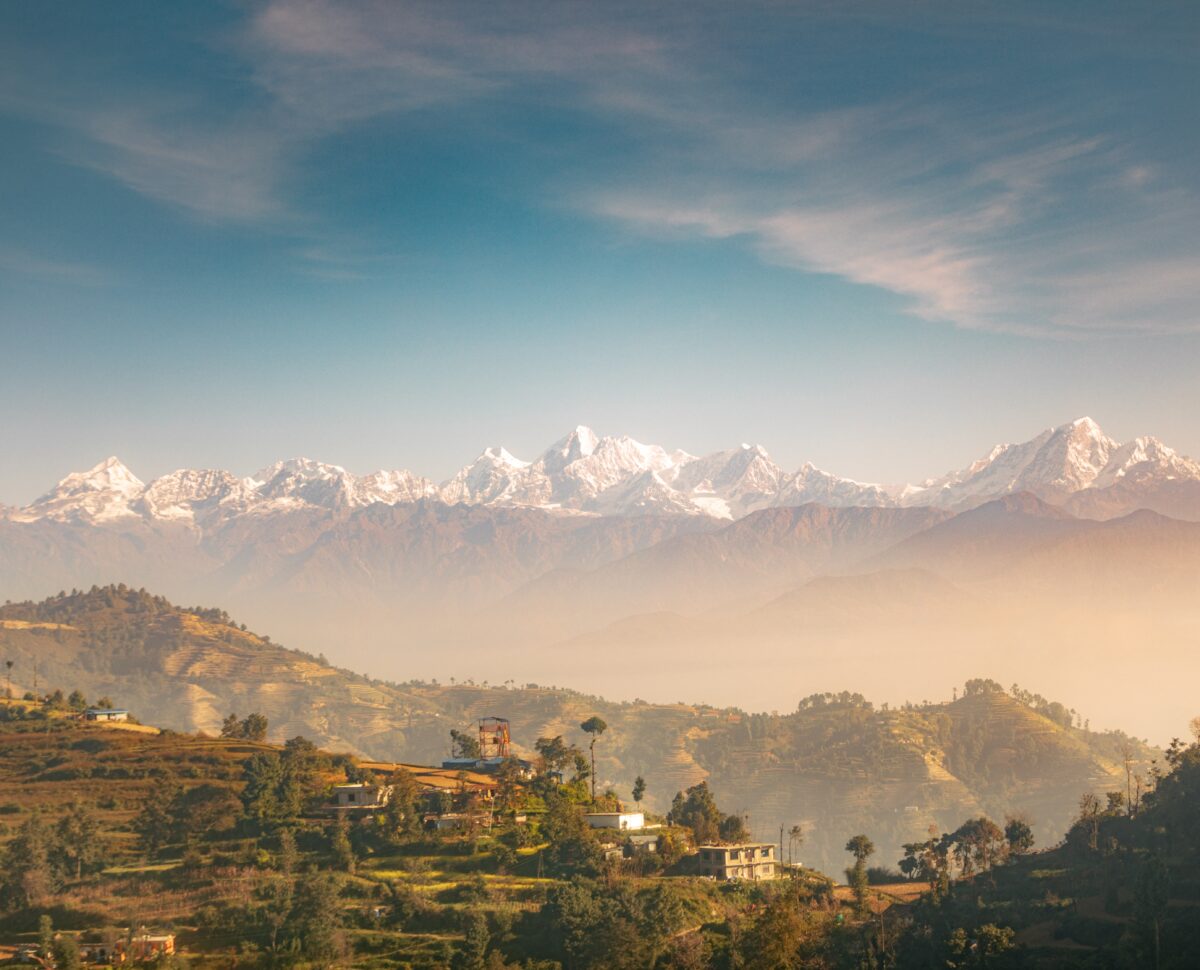
CP Aryal
‘Inter-caste unions represent one of the transformations the insurgency brought to Nepal. This phenomenon demonstrates the prospect for transformation, and ‘mindset change’, which conflicts bring about…’
From 1996, the Communist Party of Nepal (Maoist) was engaged in a decade-long insurgency against the Nepali Government. The insurgency ended with a Comprehensive Peace Agreement, signed in 2006. During the insurgency, CPN(M) promoted inter-caste marriages between Dalit and non-Dalit combatants, as a means of eradicating caste-based discrimination. In cultures informed by Hinduism, marriage works as ‘endogamous alliances’ within kinship networks. Conventionally, communities do not accept marriages outside their network. Couples transgressing this convention face ostracisation from their community. In my research, I explore how inter-caste marriage between Dalit and non-Dalit combatants worked (or did not) during Nepal’s insurgency, and after it ended.
During my fieldwork in Nepal, I visited parts of Mid-Western Nepal (a CPN(M) stronghold), and spoke to ex-CPN(M) insurgents. Their narratives shed light on inter-caste marriages’ mixed fortunes (flourishing and faltering). I suggest such marriages’ success/failures depended on family/kinship network acceptance, (dis)parities in economic class, transformations of caste-based discriminations, modernisation, mutual understanding within couples, and wider social perspectives. As others have found on this blog, many of these conversations were intense (and sometimes emotionally charged). In this blog, I share ex-combatant narratives regarding their adaptation to an evolving social institution (marriage), and their contributions to transformations in its practice.
My findings indicate combatants’ participation in inter-caste unions enabled a transformation in discriminatory caste-based mindsets/practices: with the transformation of traditional perspectives emerging from the Maoist insurgency, specifically. Such ‘changing mindsets’ (one of the Civil War Path’s seven themes for this blog series) connects to wider transformation of traditional caste-based attitudes – including violent discrimination against Dalits – and demonstrates the connection between conflict and social transformation.
Transformation during conflict: findings from Nepal
The Maoist insurgency contributed to a wider evolution in perspectives on inter-marriage between Dalits and non-Dalit, high-caste individuals. This evolution had been ongoing prior to the insurgency. Recent Government-led amendments to civil law sought to address Dalit discrimination. However, some violent behaviours at community level remained. CPN(M)’s policy on promoting inter-caste marriages during the insurgency helped transform these circumstances: motivating mindset shifts towards acceptance of inter-caste marriage (although these shifts are incomplete, as we will see below).
During the insurgency, many Maoist combatants fell in love with each other – regardless of prospective partners’ caste and class statuses. Those who were of marriageable age could either choose a partner themselves, or consent to proposals from their leaders/friends (CPN(M) had a clear policy on minimum marital ages; set at 18 for females and 20 for males). CPN(M) leaders took responsibility for arranging combatant unions, assuming the role of a conventional family guardian.
Once combatants had consented to a proposed partnership, they would get to know each other through an exchange of letters. Alternatively, the party would provide time to chat for a couple of months. Despite strict party rules against caste discrimination, Dalits remained worried about any future adjustments in a non-Dalit family post-marriage. As such, prospective Dalit/non-Dalit partners would discuss how non-Dalit family might react to their relationship, trouble-shooting possible future problems. In line with the party’s policy of celebrating inter-caste marriages, some couples requested arranged inter-caste unions.

‘Marxist love’
Combatant couples framed this courtship, sincerely, in terms of Marxwadi prem (Marxist love). That is, in terms of a courtship prioritising self-discipline: oblivious to caste and class, and cognisant of their party’s ‘revolutionary ideology’. Conversely, the party had its own discipline regarding sanskritik bichalan (sex-related scandals) before marriage. Combatants who transgressed regulations faced strict punishment. Combatants who wanted to begin a romantic relationship thus had to apply for permission to do so.
After spending time in courtship and agreeing to marry, combatant couples were asked to submit an application to the party for its approval. And it was the party itself that was responsible for arranging the union. This could involve either singular or group ceremonies. Authorised marriages were termed janabadi bihe – a Marxist model of marriage rejecting traditional and religious marriage practices.
Many combatants I spoke to felt a need for marital partnership during the insurgency, which they described as emotionally ‘exhausting’. Some highlighted marriage as a means to fulfill physical needs; some, its role in extending family; others felt marriage gave them a partner for life, and that partners would motivate each other towards the goals of the insurgency. A few of my research participants even felt that a partner’s death during the insurgency might motivate them to greater battlefield exploits.
Inter-caste relationships after the insurgency
Many insurgency-era inter-caste relationships have flourished since 2006. And many couples hope they will remain together for life. Among the flourishing relations, many are accepted by their family, kinship network, community, and friends – in spite of pre-insurgency caste traditions. Moreover, Nepalis who subscribed to CPN(M)’s political goals indirectly, without joining the insurgency as combatants, have welcomed inter-caste marriages the party approved into their families. Inter-caste unions thus represent one of the transformations the insurgency brought to Nepal. This phenomenon demonstrates the prospect for transformation, and ‘mindset change’, which conflicts bring about. In this case, the Maoist insurgency contributed to a transformation of long-held marital traditions.
That being said, it’s worth noting that some marriages remain only partially accepted. In one marriage between Brahmin (female) and Dalit (male) combatants, for example, the Brahmin wife’s natal family have not hosted the couple in their home for 15 years. The natal family remain in communication with the pair by telephone. But they are wary of welcoming the couple into their home for fear of ostracisation by their wider community. Equally, some couples have struggled to maintain internal marital harmony since 2006. Pressures around non-Dalit families rejecting a Dalit bride/groom, or around couples’ varying class status, have led to some splits. Other ex-combatants I spoke to reported post-insurgency infidelities.
Ex-combatants who underwent divorces or suffer poor relations are victims of trauma. This trauma is especially pronounced for female combatants, who face more stigma within their communities. Female divorcees I spoke to were worried about their futures. Including, as regards their children’s safety or prospects for re-marriage. Women over forty felt their age would prevent them finding a new partner. Males, by contrast, did not report difficulties re-marrying. Whilst I found some ex-combatants (and their families) framing the insurgency as a moment of transformation for their family lives, I also found some stabilities in marital practice – as well as some trauma carried into the post-insurgent period. This nuance serves as a reminder not to generalise about the dynamics of a conflict ‘path’, and to be sensitive to continuities, and reverses, that accompany every ‘transformation’.
For those who want to contact CP Aryal regarding this blog, he can be emailed at [email protected], and tweeted @CPAryal.

